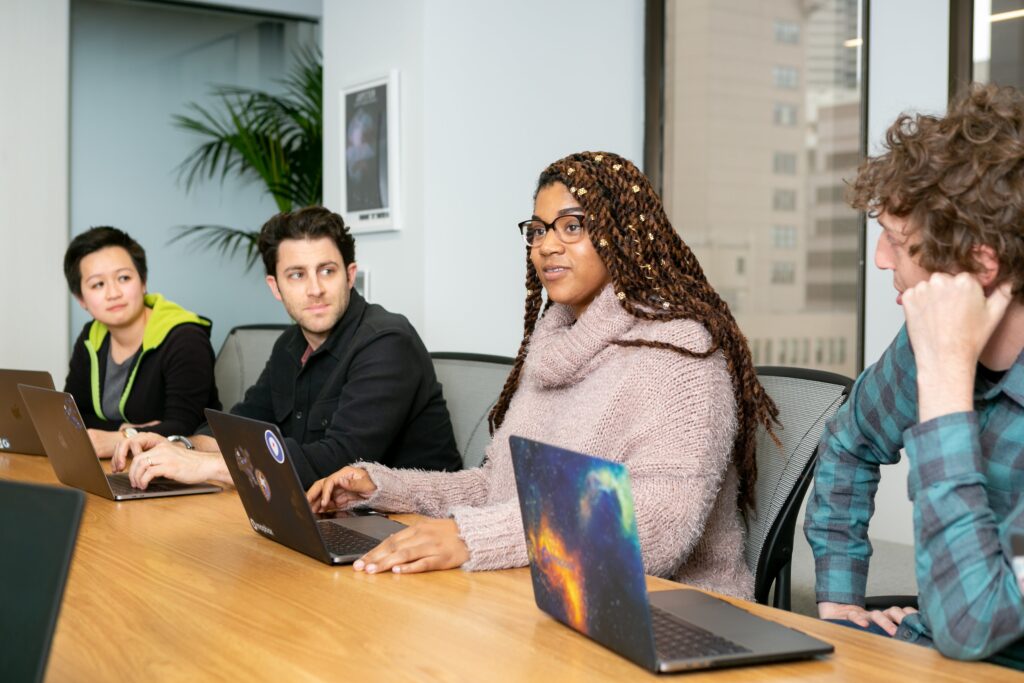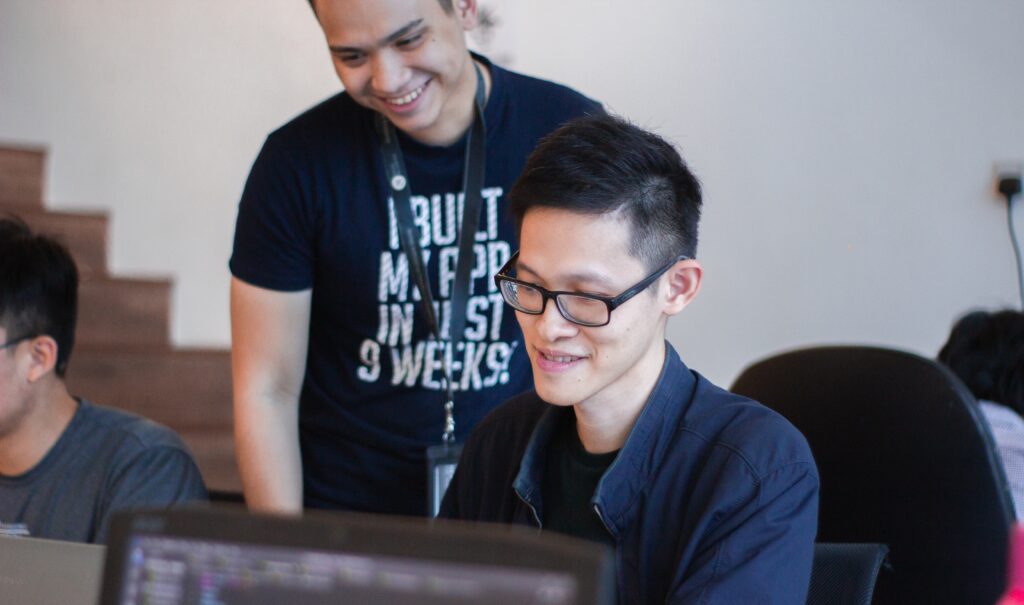Taking Steps Towards Inclusion: Making an Impact on Neurodiverse Employees
- Lucy Taskin
- 3:18 pm
- 3 Comments
In the symphony of human diversity, every individual adds their own unique note.
Neurodiverse employees, with their diverse ways of thinking and processing information, contribute harmonious melodies that enrich the workplace. To truly harness this potential, organisations must take
deliberate steps towards inclusion. Let’s explore how these steps can create a resounding impact on neurodiverse employees and the overall success of the organisations
Table of Contents
Understanding Neurodiversity: The Foundation of Inclusion
Inclusion is a fundamental concept rooted in the principle of understanding and acceptance. At its core, it embodies the idea that every individual, regardless of their unique characteristics or neurological makeup, should be valued and included in all aspects of society. One essential aspect of this understanding is the concept of neurodiversity. Neurodiversity encompasses a broad spectrum of neurological contrasts, including autism, ADHD, dyslexia, and many others.
It’s essential to approach neurodiversity with the perspective that these variations in cognitive functioning are not deficiencies or shortcomings. Instead, they are simply different ways in which the human brain functions. Each neurodivergent individual brings a unique set of strengths, perspectives, and talents to the table, enriching the diversity of human experience. Recognising and appreciating these differences is a crucial step towards fostering a more inclusive and equitable society.
To achieve meaningful inclusion, we must first build a solid foundation of awareness and empathy. This means actively seeking to educate ourselves and others about neurodiversity, its various aspects, and how it manifests in individuals. Awareness allows us to break down stereotypes, reduce stigma, and replace ignorance with knowledge and understanding. It empowers us to create environments that are accommodating, respectful, and supportive of neurodivergent individuals, enabling them to thrive and contribute fully to our communities.
Inclusion and neurodiversity are interconnected concepts that emphasise the value of understanding and acceptance of all individuals. By recognising and appreciating these differences we can pave the way for a more inclusive society, where everyone has the opportunity to excel and contribute meaningfully to the world.

Tailoring Accommodations: Unlocking Potential
Accommodations serve as essential bridges that connect individuals’ unique needs to their roles within organisations. These accommodations represent a proactive approach to creating inclusive and supportive work environments that cater to the diverse needs of employees. They can take various forms, ranging from physical adjustments like providing sensory-friendly workspaces to more flexible policies such as accommodating varying attention spans through flexible schedules.
Sensory-friendly workspaces, for instance, acknowledge the sensory sensitivities that some neurodiverse individuals may experience. These spaces are designed to minimise distractions, reduce sensory overload, and create a comfortable and conducive atmosphere for work. Such accommodations can include noise-cancelling headphones, adjustable lighting, or quiet zones, all of which help individuals better focus on their tasks and contribute their best work.
Flexible schedules are another crucial accommodation that recognises the diverse ways in which individuals with neurodiverse traits may approach their work. Not everyone functions optimally on a standard 9-to-5 schedule, and accommodating varying attention spans and energy levels can be a game-changer. By allowing employees to adjust their work hours or work remotely when necessary, organisations empower them to manage their workload in a way that suits their individual strengths and needs.
Thoughtfully addressing these unique needs is not just a matter of compliance or ticking boxes; it’s a strategy for unlocking the full potential of neurodiverse employees. When organisations prioritise accommodation, they create an environment where neurodiverse individuals feel valued, supported, and empowered. This, in turn, enables them to perform at their best, leveraging their unique talents, skills, and perspectives to contribute meaningfully to their teams and the overall success of the organisation.
Open Dialogue: Fostering a Supportive Environment
A culture of inclusion is not static but a dynamic and evolving ecosystem that thrives on open dialogue and active engagement. At its core, such a culture encourages all employees, including neurodiverse individuals, to openly communicate their preferences, needs, and requirements. This communication fosters an environment where everyone’s voice is not only welcomed but actively sought after and respected.
Encouraging neurodiverse employees to share their preferences and requirements is a cornerstone of building an inclusive workplace. By doing so, organisations demonstrate their commitment to recognising and addressing the unique needs of each team member. This dialogue allows neurodiverse employees to express their challenges and articulate the types of accommodations that would best support their work and well-being.
Regular check-ins represent a crucial component of this ongoing dialogue. They serve as a feedback mechanism to ensure that accommodations remain effective and evolve as needs change over time. Neurodiverse employees may find that their requirements shift as they grow and adapt to their roles, and it’s essential to keep accommodations aligned with these changing needs.
These check-ins also demonstrate organisational responsiveness and dedication to continuous improvement. They send a powerful message that the company values its employees’ experiences and is committed to creating an environment where everyone can excel.

Promoting Neurodiverse Role Models: Inspiring Success
Visibility is a powerful catalyst for change, and in the context of fostering a culture of inclusion, it holds particular significance. It’s not just about being seen; it’s about being celebrated and recognised for one’s unique talents and contributions. Highlighting neurodiverse employees who have excelled in their respective roles can be a transformative step in creating an inclusive workplace environment.
These role models serve as beacons of inspiration for both neurodiverse individuals and their colleagues. They dispel misconceptions and challenge stereotypes that may have previously hindered progress. By showcasing neurodiverse employees who have achieved success, organisations send a clear message that excellence knows no boundaries and that neurodiverse individuals can thrive in a wide range of roles.
For neurodiverse individuals ourselves, seeing successful role models who share our neurodivergent traits can be profoundly empowering. It provides tangible evidence that our unique strengths and perspectives are not only valued but can lead to remarkable achievements. This recognition can boost self-confidence and motivation, encouraging us to aim high and reach our full potential within the organisation.
Moreover, highlighting neurodiverse role models fosters a sense of pride and belonging among all employees. It sends the message that diversity is not just accepted but celebrated within the workplace. This, in turn, can improve overall morale and team dynamics, creating a more inclusive and harmonious working environment.
Training and Sensitisation: Cultivating Empathy
Training designed to promote neurodiversity sensitisation are a fundamental component of creating an inclusive workplace culture. The sessions serve as a vehicle for educating all employees, regardless of their neurodivergent status, about the concept of neurodiversity and its significance. They play a pivotal role in raising awareness, breaking down stereotypes, and cultivating empathy within the organisation.
- Raising Awareness: Neurodiversity sensitisation sessions help employees gain a deeper understanding of the wide range of neurological differences that exist among their colleagues. By highlighting conditions such as autism, ADHD, dyslexia, and others, these sessions shed light on the diversity of human cognition. This awareness is a crucial first step in dispelling myths and misconceptions, ultimately fostering a more inclusive environment.
- Breaking Down Stereotypes: Stereotypes and preconceived notions about neurodivergent individuals can be barriers to inclusion. Neurodiversity training challenges these stereotypes by providing accurate information and personal stories from neurodiverse individuals. It helps employees see beyond labels and recognise the unique strengths and perspectives that neurodivergent colleagues bring to the table.
- Cultivating Empathy: Empathy is a key ingredient in building a culture of support and collaboration. Neurodiversity sensitisation sessions encourage employees to step into the shoes of their neurodiverse peers, promoting understanding and compassion. When employees can appreciate the challenges and triumphs experienced by their colleagues, it fosters a more empathetic workplace culture.
- Promoting Support and Collaboration: As employees become more aware, empathetic, and informed, a culture of support and collaboration naturally emerges. When colleagues understand the perspectives and needs of their neurodiverse peers, they are more likely to offer assistance, make necessary accommodations, and collaborate effectively. This, in turn, enhances teamwork, productivity, and overall job satisfaction.

Mentorship Programmes: Nurturing Growth
Mentorship is a powerful tool that not only accelerates the career development of neurodiverse employees but also enriches the workplace culture. It fosters confidence, provides guidance, and offers emotional support, ultimately creating a more inclusive and supportive environment where all employees can thrive. Pairing neurodiverse individuals with mentors serves multiple purposes, ultimately leading to enhanced confidence and accelerated career development.
- Building Confidence: Neurodiverse individuals often face unique challenges in the workplace, such as navigating social dynamics or coping with sensory sensitivities. Having a mentor who understands these challenges can significantly boost their confidence. Mentors can provide reassurance, share coping strategies, and offer advice on how to overcome obstacles, helping neurodiverse employees feel more self-assured in their roles.
- Accelerating Career Development: Mentors can offer invaluable insights and guidance on career progression. They can help neurodiverse employees set goals, identify opportunities for growth, and develop strategies for advancing their careers. By leveraging the mentor’s experience and knowledge, neurodiverse employees can make more informed decisions and progress more rapidly in their chosen career paths.
- Sharing Experiences: Mentors can share their own experiences, including their successes and failures, which can be both instructive and inspirational. Hearing how a mentor navigated challenges and achieved success can provide neurodiverse employees with a roadmap for their own journeys. This shared wisdom can be a source of motivation and guidance.
- Emotional Support: The workplace can be a source of stress and anxiety for anyone, including neurodiverse individuals. Mentors offer a safe space for emotional support, where neurodiverse employees can discuss their concerns, seek advice, and receive encouragement. This emotional connection can be invaluable for mental well-being and job satisfaction.
- Enriching the Mentor’s Perspective: Mentorship is a two-way street, and mentors can also benefit from the experience. Guiding and supporting a neurodiverse mentee can broaden the mentor’s perspective, increase their empathy, and enhance their leadership and communication skills. It enriches their understanding of diversity and inclusion in the workplaceme
Celebrating Diversity of Thought: Driving Innovation
Neurodiverse employees offer a wealth of cognitive diversity, driving innovation and creativity. They can approach problem-solving with fresh perspectives, challenging conventional thinking. Their attention to detail and precision can be valuable, particularly in technology and data analysis. Many excel in pattern recognition, providing insights and strategic advantages. Neurodiverse individuals’ unique creativity often leads to innovative solutions and product development. Collaborative teams that include neurodiverse members excel in creative problem-solving.
Embracing neurodiversity not only benefits internal operations but can also provide a distinct advantage in the market. Organisations that harness the full spectrum of cognitive strengths are better positioned to create products and services that resonate with a diverse customer base, potentially leading to increased market share and customer loyalty.
Ultimately, building a culture that actively celebrates and promotes neurodiversity sends a powerful message. It communicates that diverse ways of thinking are not only accepted but highly valued within the organisation. This inclusive culture attracts a broader talent pool and fosters an environment where employees are encouraged to bring their unique cognitive strengths to the forefront, leading to a workplace culture that thrives on innovation and creativity.
Conclusion: Paving the Way for Impactful Inclusion
When organisations take deliberate steps towards inclusion, the impact goes beyond the individual employee. It extends to their colleagues, teams, and the organisation as a whole. An inclusive workplace cultivates a culture of respect, collaboration, and innovation that benefits everyone.
Taking steps towards inclusion isn’t just a box to check—it’s a transformative journey. By addressing the unique needs of neurodiverse employees, organisations empower them to contribute their best. This isn’t just about making accommodations; it’s about fostering an environment where every note in the symphony of diversity is heard, valued, and celebrated.
Thank you for reading!

